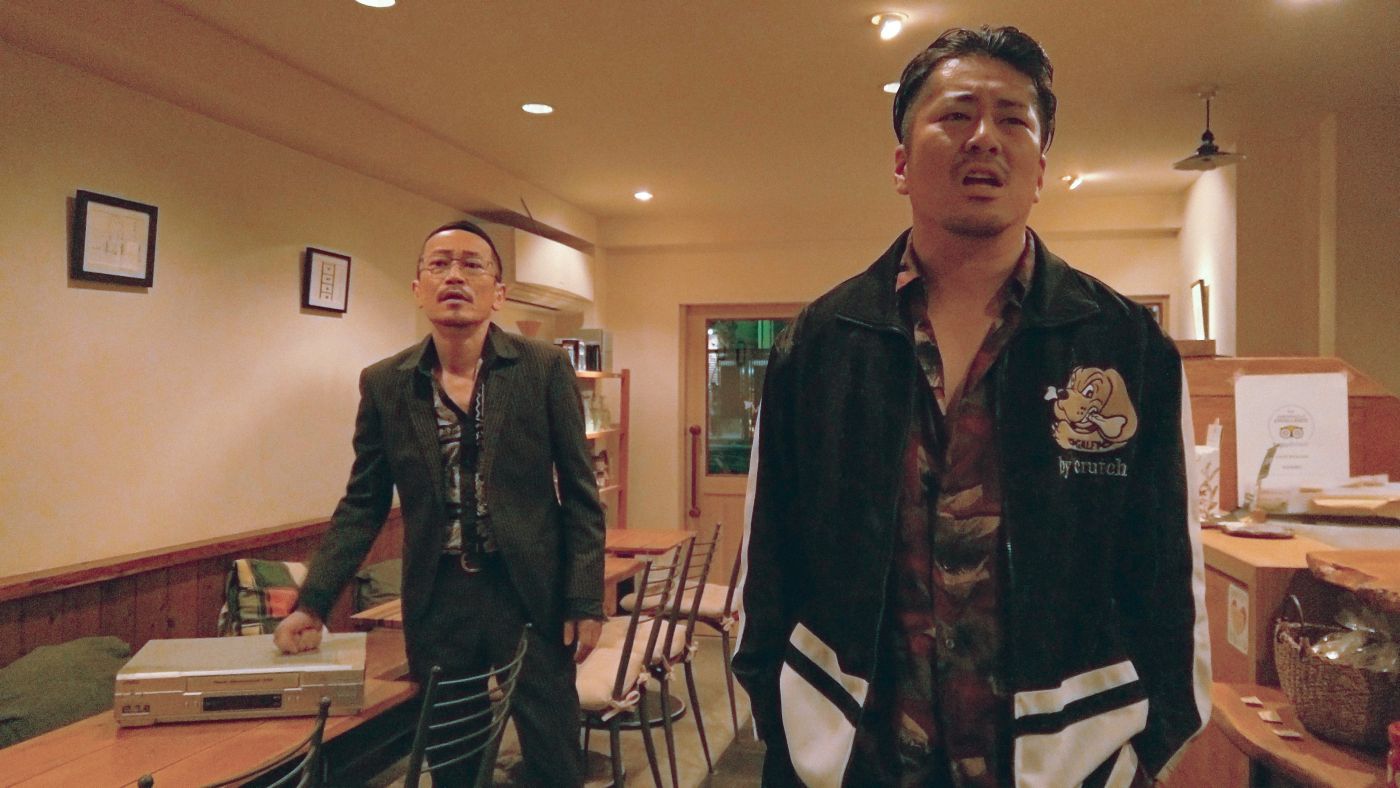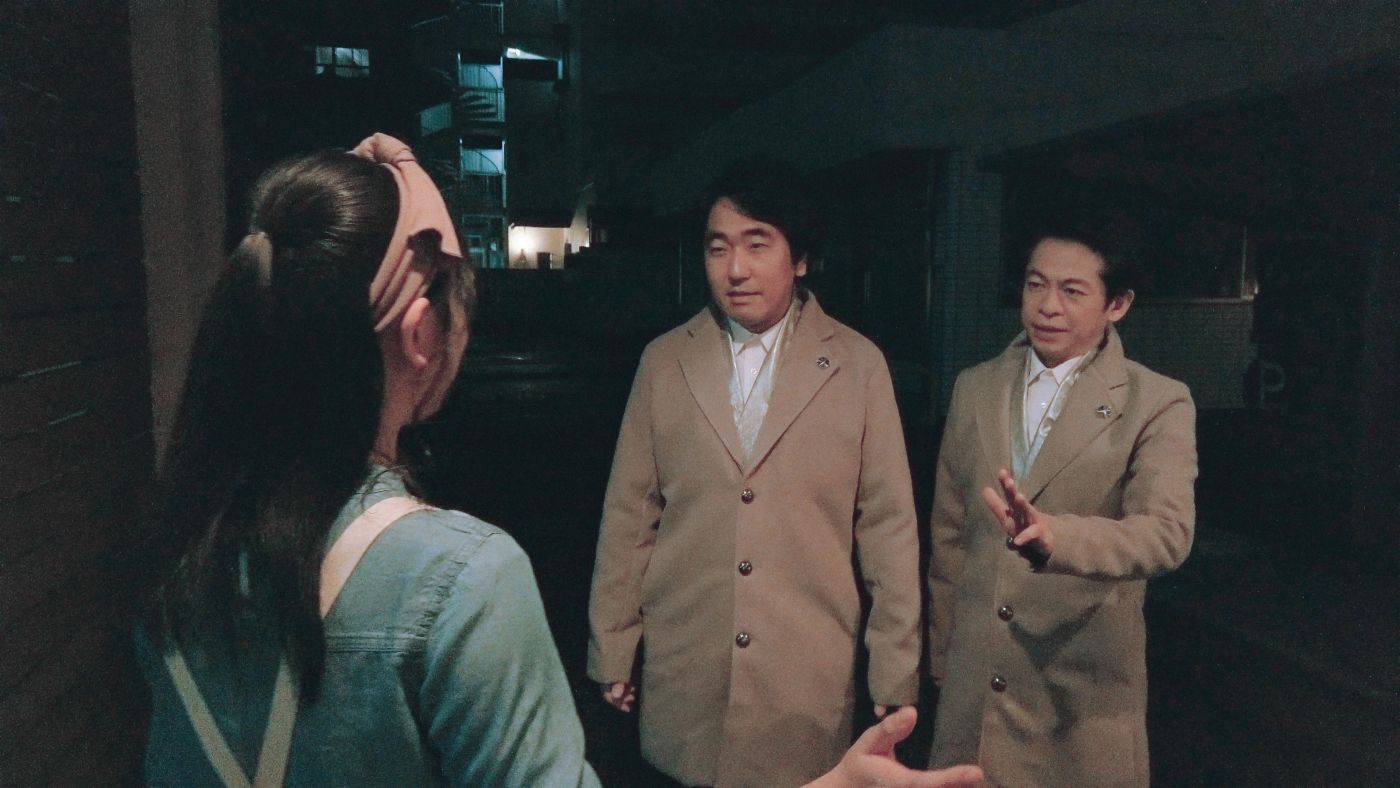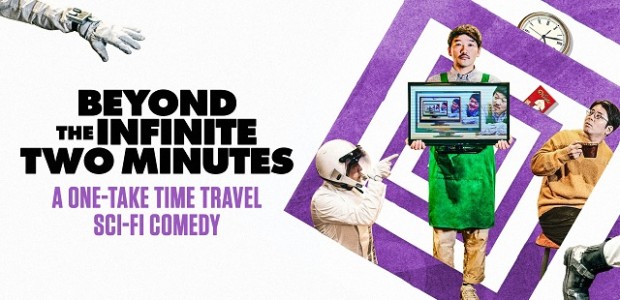Anyone with a smartphone and an internet connection can see how much inventiveness is possible in filmmaking these days. While YouTube, Tik Tok, and other such platforms don’t necessarily provide opportunities for narrative depth given their typically bite-sized runtimes, many users demonstrate time and again that there is a ton of talent and uniqueness to be displayed in terms of sheer craft. Given that motion pictures themselves began life as a sort of magic trick, it’s a tradition in cinema practically since its inception to try and dazzle with new ways of telling stories, and these social media apps are part of pushing things forward technically. Once in a while, a movie seems to find a new way of presenting a story that takes the baton from material made for social media (along with the storied history of cinema itself) and applies it to a narrative that its visual trickery only enhances. The new Japanese film BEYOND THE INFINITE TWO MINUTES is a sterling example of this marriage of ballsy innovation and compelling storytelling, one aspect never overwhelming the other.

While not shot on an iPhone (a behind the scenes reel during the film’s end credits reveal the production used a series of handheld cameras and various rigs), BEYOND THE INFINITE TWO MINUTES has a similar sense of immediacy and intimacy throughout its 70-minute runtime. Made so that the entire film appears to be one long, continuous take (itself a trope of high-wire act cinema), the movie follows Kato (Kazunari Tosa), a cafe owner who is also an aspiring musician with hopes of asking out his cute neighbor, a girl who works at the barber shop next door (Aki Asakura). After closing up shop for the night, he retires to his apartment above the cafe, about to practice his guitar when his monitor lights up with a live feed. The man on the feed is Kato himself, seemingly streaming from a monitor in his cafe downstairs and demonstrating that he’s speaking from two minutes into the future. When Future Kato requests that Present Kato go downstairs and tell his Past self what he’d just been told, Kato complies, proving that the two monitors are linked by a temporal version of a broadcast delay. Kato’s employee, Aya (Riko Fujinati), and his pal Komiya (Gôta Ishida) happen upon Kato interacting with the monitors, figure out the time travel-ish setup for themselves, and become so enthused at the possibilities they call their other friends to come join them, resulting in a party of five happily bouncing upstairs and downstairs while discovering the possibilities of the “Time TV,” possibilities that only become more thrillingly complex — and paradoxically dangerous — when one of the group decides to make each monitor face the other, creating an infinitely growing loop.

The film is the debut feature for director Junta Yamaguchi and most of the cast and crew, all of whom belong to the theatre group Europe Kikaku. The filmmakers’ theatrical background is blissfully apparent in the overall charming tone of the movie and the characters themselves—while Kato and his pals eventually get into some life-threatening trouble, the movie never loses its winning exuberance. It’s carried forward through all its potentially confusing sci-fi trappings by the characters’ sheer excitement at their discovery, a quality that’s bolstered by the cast clearly enjoying each others’ company. It’s easy to compare BEYOND THE INFINITE TWO MINUTES to what feels like its direct ancestor, 2017’s ONE CUT OF THE DEAD, that film being not only a Japanese genre feature about a similarly charming group but one that also centered around a one-take shot. While BEYOND carries on ONE CUT’s brand of plucky ingenuity, the film can also be mentioned in the same conversation as big-budget time travel adventures like TENET (2020) in the way it essentially teaches the audience how to watch it as it goes along. Its “time travel” (or one might call it time looping) is based on something known as the Droste effect, the phenomenon where a picture recursively appears within itself. Using this concept means that the sci-fi aspects of the film are visualized as well as discussed, a key plus in a story that concerns very heady scientific notions.

Yamaguchi and writer Makoto Ueda never let the sci-fi wackiness overwhelm the movie, however — even if one gets lost in the explanations and applications of things like the Droste effect, the film still has a lot to offer. The camaraderie between the friend group is not only infectiously buoyant, but engagingly delineated through character, as each person has their own individual reaction to the “Time TV” — some of them use it to play the lottery, others use it to test their future knowledge or see if they’re gonna get a toy prize they’ve always wanted, and so on. Kato is pressured to use it to see if that girl in the barber shop might come to his concert, kicking off a love story that’s sweet and poignant as both Kato and his love interest’s pasts gradually come to light, not to mention their future. Eventually, the ensemble runs afoul of some local gangsters, giving the movie some dramatic stakes that aren’t metaphysical, allowing it to indulge in some classic drama on top of all the mind-bending physics. The way the group use the TV to combat their gangster foes results in a sequence that’s part Rube Goldberg, part BILL AND TED’S EXCELLENT ADVENTURE (1989), and provides a payoff that continues to demonstrate Yamaguchi’s skill at choreography and cinematography.

BEYOND THE INFINITE TWO MINUTES packs a ton into its brief runtime, and is paced so briskly that it does feel like it hits a wall at times. Even when that happens, however, the characters are so grounded and engaging that they carry the film through such little speed bumps. What’s perhaps most impressive about the movie is the way it presents such a unique concept with ingenuity and yet still manages to tell a character-based, thematically rich story. It treats knowledge of the future (and subsequent potential manipulations as a result of that knowledge) as both a gee-whiz magic trick and a cautionary tale of hubris. It’s a movie about embracing one’s past (however flawed) while having faith in one’s future (however uncertain). A film like this could’ve easily been style over substance, but Yamaguchi and Ueda cleverly tie everything together with moments that can be compared to the likes of “Rick and Morty” and BEFORE SUNRISE (1995), making the film both tenderly simple and hilariously complex. Despite the numerous bite-sized instances of trailblazing craft available on the internet, BEYOND THE INFINITE TWO MINUTES proves that innovation can still happen on the silver screen, and that spectacle and heart needn’t be mutually exclusive.
Tags: Aki Asakura, Fantasia Film Festival, Gôta Ishida, japan, Junta Yamaguchi, Kazunari Tosa, Makoto Ueda, Riko Fujitani, Yoshifumi Sakai




No Comments